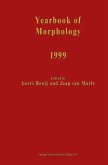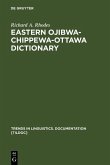The Navajo language is spoken by the Navajo people who live in the Navajo Nation, located in Arizona and New Mexico in the southwestern United States. The Navajo language belongs to the Southern, or Apachean, branch of the Athabaskan language family. Athabaskan languages are closely related by their shared morphological structure; these languages have a productive and extensive inflectional morphology. The Northern Athabaskan languages are primarily spoken by people indigenous to the sub-artic stretches of North America. Related Apachean languages are the Athabaskan languages of the Southwest: Chiricahua, Jicarilla, White Mountain and Mescalero Apache. While many other languages, like English, have benefited from decades of research on their sound and speech systems, instrumental analyses of indigenous languages are relatively rare. There is a great deal ofwork to do before a chapter on the acoustics of Navajo comparable to the standard acoustic description of English can be produced. The kind of detailed phonetic description required, for instance, to synthesize natural sounding speech, or to provide a background for clinical studies in a language is well beyond the scope of a single study, but it is necessary to begin this greater work with a fundamental description of the sounds and supra-segmental structure of the language. Inkeeping with this, the goal of this project is to provide a baseline description of the phonetic structure of Navajo, as it is spoken on the Navajo reservation today, to provide a foundation for further work on the language.
Dieser Download kann aus rechtlichen Gründen nur mit Rechnungsadresse in A, B, BG, CY, CZ, D, DK, EW, E, FIN, F, GR, HR, H, IRL, I, LT, L, LR, M, NL, PL, P, R, S, SLO, SK ausgeliefert werden.
From the review by Daniel L. Everett, Illinois State University, published in Language 83 (2007): "This book was a pleasure to read. It is laid out well, the spectrograms are clear, and the writing is clear and well-organized. I strongly recommend NSS [The Navajo Sound System] to all Americanists as an example of the kind of detail and care that - in an ideal world - should be standard in all efforts to document and describe Native American Languages."









